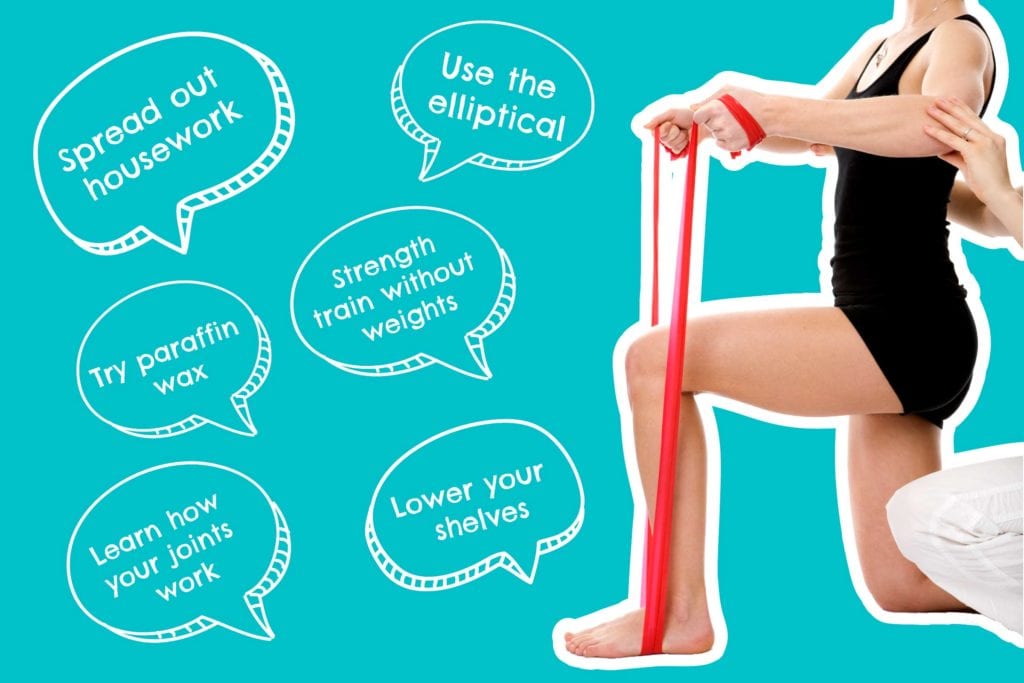Osteoarthritis is the most common form of arthritis, and although it is often related to aging it is not a normal part of aging. Osteoarthritis breaks down the cartilage in the joints, and when this cartilage is lost, the bones rub together. Over time this rubbing can permanently damage the joint. This results in pain, stiffness, swelling and reduced motion in the joint. Osteoarthritis can occur in any joint, but usually it affects the hands, knees, hips or spine.
Research confirms that physiotherapy can help alleviate the symptoms of arthritis, and that therapeutic exercise, acupuncture and electrotherapy can reduce joint pain. Working with your physiotherapist and following the Physio-4 for Osteoarthritis, can help patients suffering from osteoarthritis keep moving for life.
1. Is it Joint or Muscle Pain?
Muscle pain (within limits) is normal, and can occur when you do something you haven’t done for a while. Joint pain is not normal. If you have had joint pain in the past year and for most days of the month, get a comprehensive assessment from your physiotherapist to determine if your symptoms indicate Osteoarthritis.
2. Build Your Muscles Up
Keep your muscles strong around the arthritic joint to support it. Be physically active with cardiovascular and strength exercise like biking, walking and/or aquatic exercise. Your physiotherapist can provide an exercise program to help you build strength to limit the effects of arthritis once you are diagnosed.
3. Keep Moving
You can restore and maintain the mobility of your arthritic joint with regular exercise. When increasing your activity or starting your physiotherapy program, give yourself rest breaks during the day to compensate for the increased activity. Many types of arthritis are characterized by bouts of extreme tiredness that can leave you drained of energy. Balancing activities, exercise, and rest times is critical to staying healthy and physically active, and to increasing energy.
4. Use Aids to Help
If you suffer from hand osteoarthritis, your physiotherapists can suggest aids, braces or tools that protect your hand joints and help you manage daily activities. Aids such as ergonomic handles, assistive jar openers, electric can openers, walking sticks and other devices will also help you maintain independence.
Physiotherapists are the rehabilitation specialists recommended most by physicians. They are university-educated health professionals who work with patients of all ages to diagnose and treat virtually any mobility issue. Physiotherapists provide care for orthopedic issues such as sport and workplace injuries, as well as cardiorespiratory and neurological conditions. As the most physically active health professionals, physiotherapists know how to keep you moving for life.
The Physiotherapy Association created the Physio-4 to share the expertise of its members with fellow British Columbians and those across the globe. 4 tips are provided to treat specific health or physical conditions that will help keep you moving for life. Physiotherapists want you to know that if you are injured or in pain, a physiotherapist can help. After all, they are the healthcare professionals physicians recommend most.
